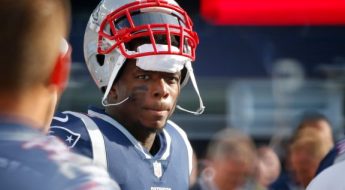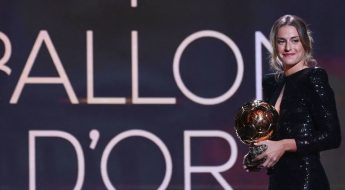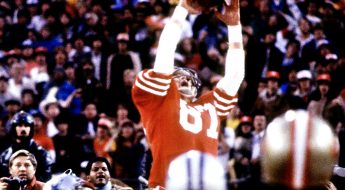Expect Super Bowl refs to let DBs play

Super Bowl LI has been dissected from nearly every angle. In the final days before the game, let us add one more: the role of officiating in determining the eventual champion.
Perhaps the least-discussed aspect of this matchup is the extent to which referee Carl Cheffers and his crew will allow defensive players on both sides to be physical with opposing receivers. It’s an especially pertinent topic given the New England Patriots’ long history of overcoming elite-level offenses in the playoffs, at times using a strategy that was so physical that it prompted the NFL to redouble its efforts to enforce defensive holding and illegal contact penalties in the mid-2000s.

Sunday, Feb. 5 | 6:30 p.m. ET | Fox
• What you need to know
• FiveThirtyEight predictions
• Quiz: Who should you root for?
It stands to reason that the Patriots will have more success against Atlanta Falcons quarterback Matt Ryan and receiver Julio Jones if their cornerbacks can push the limits of what’s allowable under NFL rules. Will Cheffers and his crew permit it? Let’s make that issue the focus of our final officiating preview of the 2016 season.
As we’ve noted often, penalty frequency can vary dramatically among NFL officiating crews, similar to a strike zone that changes in baseball depending on who the home plate umpire is.
Tracking this tendency, as both the Patriots and Falcons surely have done, is complicated because Cheffers won’t have his usual regular-season crew.
The NFL assigns postseason games to its top-graded officials, regardless of crew assignment. In this case, Cheffers will have only one member of his 2016 crew with him: head linesman Kent Payne. Cheffers himself has little impact on penalty calls in the defensive backfield from his position behind the quarterback, other than setting the tone for the entire crew before the game.
So in this situation, we’ll utilize regular-season data for the crews of each official who will play a role in making such calls.
We’ll refer to “defensive coverage” penalties: the combined total of calls for defensive pass interference, illegal contact and defensive holding. As you’ll see below, most of the officials who’ll have the primary responsibility for those calls in Super Bowl LI — as spelled out on the NFL’s football operations site — hail from crews that call fewer such penalties on average.
Here’s one statistic to keep in mind from the top: Overall, penalties have dropped 29.7 percent in the 2016 playoffs compared to the regular season, from 15.8 per game (including declined/offsetting) to 11.1. Within that drop, however, calls for pass interference, illegal contact and defensive holding have remained steady: about 1.2 per game. It’s quite possible, of course, that the flag total has remained constant even as the level of physicality has increased, which leads to a net result of fewer uncalled fouls.
Referee Carl Cheffers
2016 analysis: For what it’s worth, Cheffers’ regular-season crew called a combined 45 defensive coverage penalties, fifth most in the NFL. As a referee, he is primarily responsible for officiating hits to the quarterback and offensive holding. During the regular season, he called only five roughing-the-passer penalties, and his crew called 46 penalties for offensive holding, fifth fewest in the NFL. He drew criticism from the Kansas City Chiefs, most notably tight end Travis Kelce, for calling a hold on left tackle Eric Fisher to negate a game-tying two-point conversion late in a divisional playoff game against the Pittsburgh Steelers. Cheffers also called a questionable face mask penalty against the Detroit Lions in 2015 that put the Green Bay Packers in position to win with a Hail Mary touchdown throw. Former NFL vice president of officiating Mike Pereira wrote in his book, “After Further Review,” that the penalty was “too technical to call.”
Head linesman Kent Payne
2016 analysis: See Cheffers information above.
Field judge Doug Rosenbaum
2016 analysis: Spent the season on referee Pete Morelli’s crew, which called a total of 30 defensive coverage penalties, fourth fewest in the NFL.
Side judge Dyrol Prioleau
2016 analysis: Spent the season on referee Jeff Triplette’s crew, which called a total of 34 defensive coverage penalties, tied for seventh fewest in the NFL.
Back judge Todd Prukop
2016 analysis: Spent the season on referee Tony Corrente’s crew, which called a total of 34 defensive coverage penalties, tied for seventh fewest in the NFL.
There are 17 officiating crews in the NFL, and it’s worth noting the range of defensive coverage penalties between them. Referee Jerome Boger’s crew called 59, while Craig Wrolstad’s called 22. Three of the four crews represented in this analysis called fewer than the median total.
This isn’t all based on the officials’ tendencies, of course. The teams themselves, their strategies, and the skill with which their defenders use their hands play a role, too. During the regular season, the Patriots were called for 18 defensive coverage penalties, tied for the eighth fewest in the league. The Falcons were called for 19.
When two opponents have been penalized less than the median, and the majority of officials hail from conservative crews, there is reason to believe that defensive backs will be allowed a fair degree of physicality in Super Bowl LI. That would seem to favor the Patriots, especially in their efforts to slow down Ryan and Jones. But in the end, that’s why they play the game.






